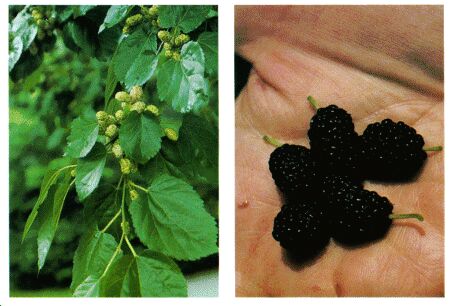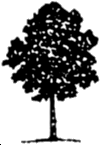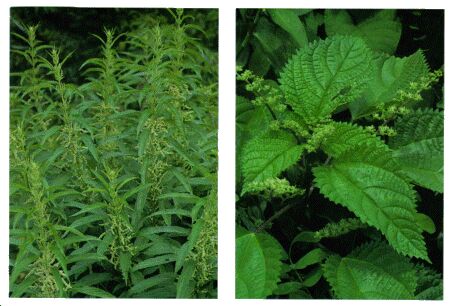 |
 |
 |
 |
| APPENDIX B |

Description: This tree has alternate, simple, often lobed leaves with rough surfaces. Its fruits are blue or black and many seeded.
Habitat and Distribution: Mulberry trees are found in forests, along roadsides, and in abandoned fields in Temperate and Tropical Zones of North America, South America, Europe, Asia, and Africa.
Edible Parts: The fruit is edible raw or cooked. It can be dried for eating later.
|
Other Uses: You can shred the inner bark of the tree and use it to make twine or cord.


Description: These plants grow several feet high. They have small, inconspicuous flowers. Fine, hairlike bristles cover the stems, leafstalks, and undersides of leaves. The bristles cause a stinging sensation when they touch the skin.
Habitat and Distribution: Nettles prefer moist areas along streams or at the margins of forests. They are found throughout North America, Central America, the Caribbean, and northern Europe.
Edible Parts: Young shoots and leaves are edible. Boiling the plant for 10 to 15 minutes destroys the stinging element of the bristles. This plant is very nutritious.
Other Uses: Mature stems have a fibrous layer that you can divide into individual fibers and use to weave string or twine.
| Updated: 12 January 2008 |
|
Born on 02 January 2000 |